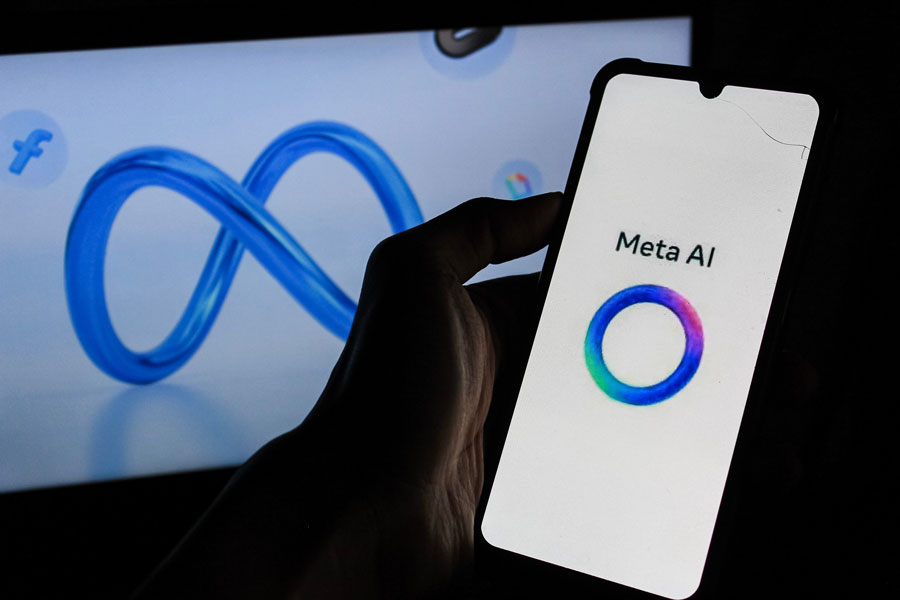
WEST PALM BEACH, FL – On October 1, 2025, Meta announced a significant update to how it will personalise content and advertisements on its platforms. Beginning December 16, 2025, Meta will start using your interactions with its AI features as a new signal for tailoring what you see – from posts and reels to ads.
What exactly is changing?
- Meta has said that your interactions with generative AI features (for example, chats with the AI assistant in Facebook/Instagram) will now help shape recommendations and advertising.
- The update covers both text exchanges and voice chats with Meta’s AI tools.
- Example given: if you chat with Meta’s AI about hiking, Meta may infer you’re interested in hiking – just as if you had liked a hiking-page or watched a trail video — and will show you more hiking-related content and ads.
What is not included (or what Meta says is excluded)
- Meta says that conversations with its AI about “religious views, sexual orientation, political views, health, racial or ethnic origin, philosophical beliefs, or trade union membership” will not be used to show you ads.
- Meta emphasizes it “doesn’t use your microphone unless you’ve given permission and are actively using a feature that requires the microphone.”
Why it matters
Personalisation has long been based on what you like, share, click, and follow. With this update, Meta is adding what you say and type (or speak) to its AI tools as another layer of understanding your interests. That expands the data Meta uses to build your profile and tailor your experience.
For users, this means:
- More relevance: you may see content / ads more closely aligned to your recent dialogues with AI.
- Potentially increased visibility of more personalised advertising triggers.
- Less anonymity in how your preferences are inferred — even chats you might have assumed were “just conversation” may influence your feed.
What you can do / what control you have
- Meta says you can adjust Ads Preferences and other feed controls to some degree.
- However, reports indicate that if you use Meta’s AI tools, you cannot opt-out of this specific data use for personalization (at least in many regions).
- If you prefer to limit how your AI interactions are used, you could avoid interacting with Meta’s AI features (or keep those conversations minimal).
- In some regions (e.g., EU) you may have more legal rights or objection processes, but outside those regions the default may be simply using the service implies consent.
Regional & regulatory notes
- Meta’s announcement states the change will begin globally on December 16, 2025, though with exceptions in certain jurisdictions (for example the EU, UK, and South Korea) where regulatory demands require different handling.
- Because laws vary region to region, your rights and the exact implementation may differ.
Key takeaways
- If you chat with Meta’s AI tools (text or voice) from December 16, your interactions may inform what content and ads you later see.
- The type of data used is broader than just your clicks or likes — it includes what you tell the AI.
- Meta keeps certain categories of “sensitive topics” excluded from ad-targeting based on those AI interactions, but many other topics remain usable.
- While you may have some controls (via feed/ads settings), you likely cannot fully opt-out of this new data usage if you use the AI features.
- If you want to minimise this influence: avoid or limit using Meta’s AI tools, adjust your ad settings, and review what you share in conversations with the AI.
Why are they doing this?
Meta frames this update as part of improving user experience – delivering content and recommendations that feel more relevant, by using the newer interaction type (AI chats) just as it uses “liking a post” or “following a page”. (Facebook even keeps track of what you scroll past, or stop on, even if you do not click)
From a business perspective, personalised ads are Meta’s primary revenue driver; adding another signal (AI interactions) enhances their ability to profile interests and show more effective ads.
What to watch out for
- Even though Meta excludes certain “sensitive topics” from ad targeting via these AI interactions, the line between what is “sensitive” vs what is “interest-based” can be fuzzy.
- The fact you cannot opt-out (in many places) means this is a “use-it-and-be-profiled” scenario.
- Privacy advocates worry that chats feel more private and conversational than clicking a “like”, so users might reveal more in a chat than they realise, which then feeds into ad algorithms.
- The announcement is broad enough to cover multiple Meta AI features – not just one chatbot – so voice, image, and other AI modalities may eventually be included.
Final thoughts
If you’re a user of Facebook, Instagram, or other Meta apps, this change is worth paying close attention to: your chats with AI are no longer “just a chat” — they’re becoming part of how Meta decides what you see and which ads you receive. In fact, Meta appears to view this as a significant policy shift. I personally received three separate emails within the last day or so notifying me about these privacy policy updates, which suggests Meta wants to ensure users can’t miss the news. Companies typically only send repeated notifications like that when the change is both important and far-reaching.
If you’re a privacy-conscious user, now’s the time to think carefully about whether you want to use these new AI features – and to review your ad and feed settings to limit how your information is used. And if you manage a website or digital brand, the implications are broader: in a world where even AI conversations feed back into recommendation systems, content and marketing strategies may need to evolve alongside these new, AI-driven personalization signals.
Tracking Your Activity Across Devices And Platforms
Your “Advertising Profile” Is Usually ID-Based
These systems assign you one or more anonymous identifiers — not your name, but a persistent unique ID tied to your behavior. Examples include:
- fbp / fbc cookies → Meta’s tracking IDs used via the Facebook Pixel and Conversions API.
- fbclid → a click ID added to URLs when you click links from Facebook or Instagram.
- Google Ad ID (GAID) → used on Android devices.
- Apple IDFA → “Identifier for Advertisers,” used on iOS devices.
- Ad network user IDs → generated by exchanges like The Trade Desk, LiveRamp, Oracle Data Cloud, etc.
Each of these identifiers builds what’s called a “shadow profile” or “interest graph” — a data set describing your demographics, interests, behaviors, spending patterns, and interactions.
Meta’s Version: the Ad Preferences Profile
Meta calls its internal version your “Ad Preferences” or “Ad Topics” profile.
This is the collection of signals it uses to show you ads and suggestions, including:
- Pages you’ve liked or interacted with
- Topics inferred from your activity or AI interactions
- Advertisers whose sites you’ve visited (via the Pixel)
- Your device and location data
- Information from partners (e.g., data brokers, other apps)
You can view and manage this on Facebook by going to:
Settings & Privacy → Ads → Ad Preferences
or directly at facebook.com/adpreferences/ad_settings.
To Data Brokers and Ad Exchanges
When your data moves beyond Meta to the larger ad ecosystem, your “advertising profile” becomes an audience segment rather than a person.
Examples of labels they might assign to you:
- “Auto Enthusiasts / Used Car Shoppers”
- “South Florida Homeowner”
- “In-Market for SUV Lease”
- “Likely Male, 35–44, Affluent Suburban Household”
- “AI Tool User / Tech Early Adopter”
You’re represented not as a name but as a data point in hundreds of overlapping interest categories sold or shared between exchanges.
How to See Yours
- On Facebook: facebook.com/ads/preferences
- On Google: myadcenter.google.com
- On Apple: Settings → Privacy → Tracking → Ad Personalization
- On Twitter/X: twitter.com/settings/your_twitter_data
Keep in mind, when Meta, Google, or other large ad networks profile you, they don’t usually store your identity as “John Smith” or “Jane Doe.” Instead, they maintain what’s called an advertising profile or ad identity, identified by unique IDs that track your activity across devices and platforms often tied to an internal user ID (like fbid=1234567890) or your Ad ID (like IDFA or GAID).







